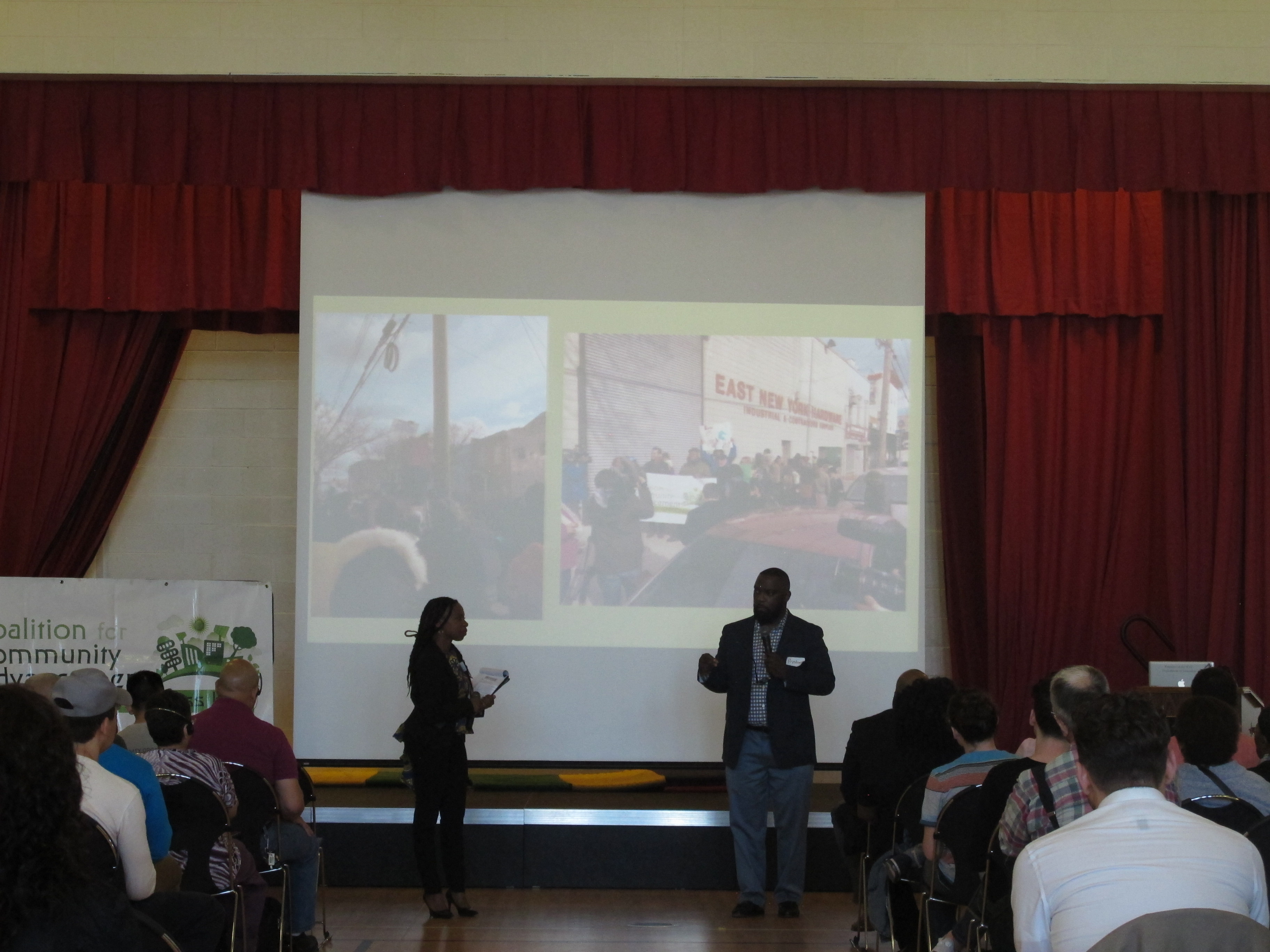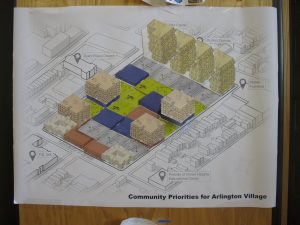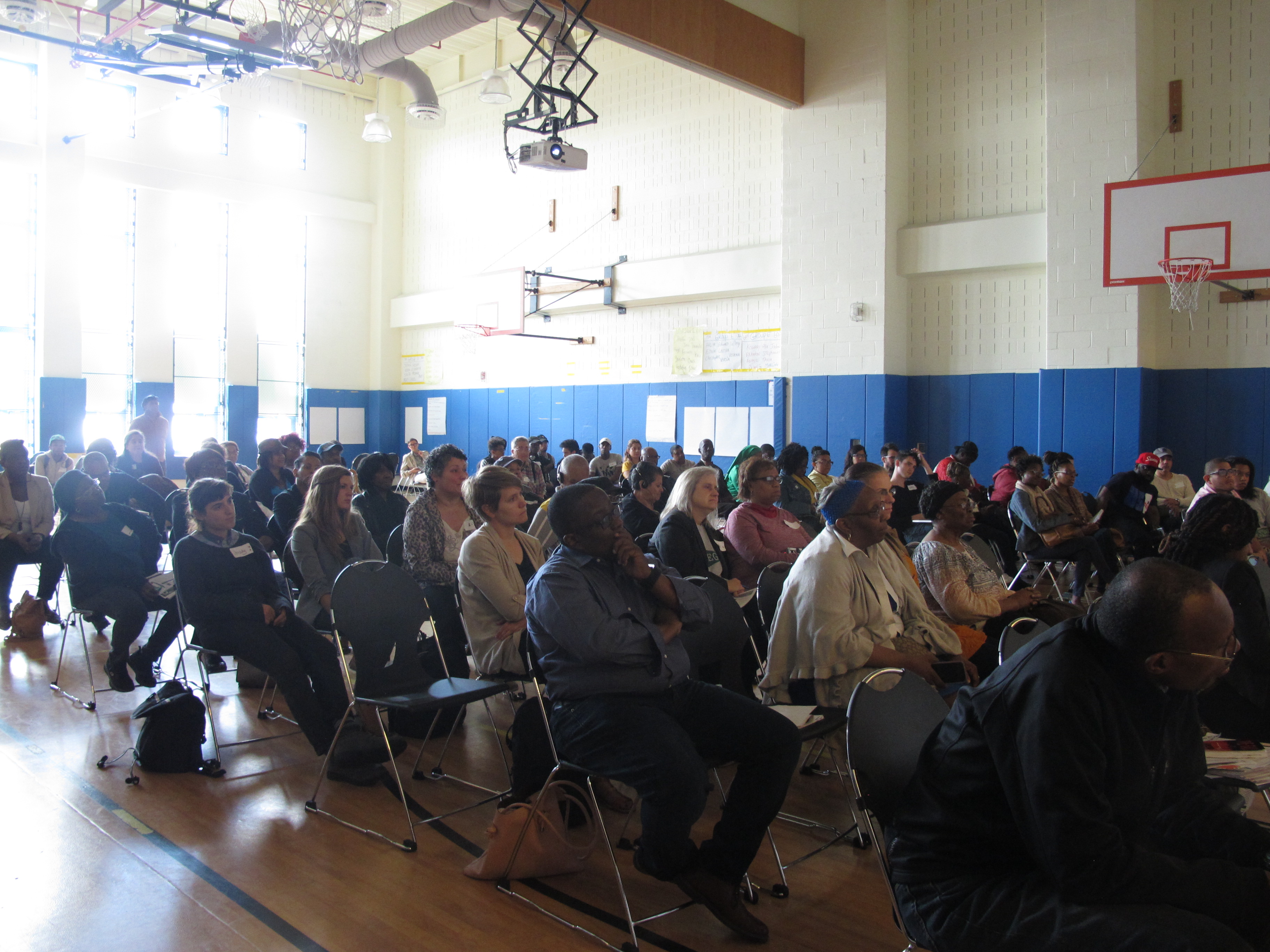One Year After Rezoning, East New York and Cypress Hills Residents Gather to Keep Up the Fight

East New York and Cypress Hills residents came out this past Saturday for a Community Assembly hosted by the Coalition for Community Advancement, seeking to inform and engage community members one year out from a neighborhood-wide rezoning. The rezoning of East New York – approved in April, 2016 – was the first, and to date only, neighborhood rezoning to pass as part of the de Blasio administration’s Housing New York Plan. But as impassioned speakers and community leaders reminded the crowd throughout the day, the work of the local community in this process is far from done.
Coalition members Catherine Green and Pastor Preston Harrington started the day with a forceful rallying call for people to get involved and stay involved. As Green put it, “It’s important that we’re at the table, not on the menu.” Coalition members shared their experience organizing and advocating around the rezoning – highlighting what they fought for and what they won – while stressing that the fight continues around their unmet demands, including deeper affordability, new anti-displacement policies, and community benefit agreements with private developers to achieve measures like local hire and a living wage.
The Assembly included a visioning session around Arlington Village and a presentation on the potential development of Broadway Junction. Arlington Village, a privately owned site encompassing the entirety of two city blocks, was successfully cut out of last year’s rezoning thanks to the Coalition’s efforts, to better ensure that any new development there matches the community’s needs. Neighborhood residents had the opportunity to share their vision for the site, including around housing density and open space and what type of community facilities and commercial establishments would best serve the area. Representatives from The Department of City Planning and the Office of the Brooklyn Borough President presented a vision for Broadway Junction as a future office and retail hub – a move that would largely require a new land use review process – with a chance for questions from community members afterwards.


Both these sessions served to illustrate the larger message of the Coalition: that change is coming to East New York and even if it seems far off, now is the time to get involved, to organize and to stay organized so that the community can assert itself as early and as frequently as possible in the land use process and the scope of any future development. Or as Coalition member Al Scott put it, “How do we make sure we’re involved in the beginning, the middle and the end?” of the entire process.
Coalition member Bother Paul Mohammed closed out the event by laying out what was at stake for the community and why it’s so urgent for residents to get involved. “This is the last stand, if we’re forced out of East New York, there’s no place left for us to go.” But Mohammed, and his fellow speaker Ana Aguirre, were eloquent about their faith in the power of East New York and the strength of its community. Noting all that has been fought for and won in the past, including during last year’s rezoning as well as through prior long decades of disinvestment, Aguirre concluded by saying, “Don’t tell me we cannot organize and we cannot change things.”
This is a vital message, not just for East New York, but for every neighborhood facing a rezoning throughout the city, where the crucial fight is for communities to be equal partners in both the planning process and the planning outcomes. As the hard work of the Coalition for Community Advancement shows, community involvement can produce real results with real benefits for the neighborhood. But the work is never finished and the battle is always uphill. It takes constant engagement, constant organizing and constant people power to make it a reality. This is what our member groups are working for day in and day out and what ANHD is proud to work in support of.

Photos courtesy of Nora Gordon from Brooklyn Legal Services Corporation A (BKA).
 ANHD 2016 Building the Community Development Movement
ANHD 2016 Building the Community Development Movement





